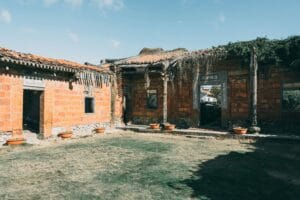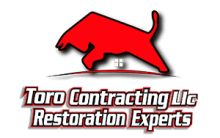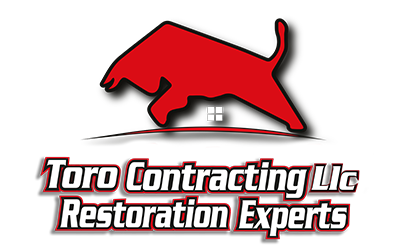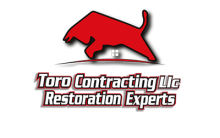Five key documents will prove your roof’s storm damage: weather reports confirming the storm’s occurrence and intensity, professional roof inspection reports with detailed damage assessments, comprehensive before-and-after photos with timestamps, insurance adjuster’s inspection findings, and maintenance records establishing your roof’s pre-storm condition. Neighbor testimonials and area damage documentation can further validate your claim. This evidence creates a compelling case that distinguishes legitimate storm damage from normal wear or pre-existing issues.
Key Takeaways
- Weather service reports documenting storm dates, wind speeds over 50 mph, and hail diameter exceeding 1 inch.
- Professional roof inspection reports with photographic evidence, damage diagrams, and written assessment of storm impact.
- Before-and-after photos showing roof condition with timestamps, including close-ups of specific damage points.
- Insurance adjuster’s inspection report detailing observed damage, measurements, and categorization codes like “FWD.”
- Contractor estimates from licensed professionals that specifically document and differentiate storm damage from pre-existing conditions.
Detailed Weather Reports and Storm Data
When substantiating roof storm damage for insurance claims, comprehensive weather reports serve as foundational evidence. These documents establish the occurrence, timing, and storm intensity that affected your property. Obtain official reports from the National Weather Service or accredited meteorological services that detail specific weather patterns during the incident period.
Your documentation should include precise measurements of precipitation, wind speeds, and hail size if applicable. Insurance adjusters assess claims based on whether recorded weather events reached damage-causing thresholds. Most carriers require wind speeds exceeding 50 mph or hail diameter of at least 1 inch to validate roof damage claims.
Supplement official reports with local news coverage and radar imagery showing the storm’s path across your property. Timestamped data creates an irrefutable chronological connection between the weather event and your roof’s deterioration.
Professional Roof Inspection Documentation
Although homeowners may observe apparent damage, professional inspection documentation serves as the cornerstone of successful insurance claims. Insurance adjusters rely on certified professionals who utilize advanced roof inspection techniques to verify storm damage. These experts produce detailed reports containing photographic evidence, diagrams of affected areas, and measurements that quantify the extent of destruction.
Modern damage assessment tools include thermal imaging cameras that detect subsurface moisture, moisture meters that identify saturation levels, and drone technology for comprehensive aerial documentation. Professional inspectors also document specific indicators like granule loss patterns, impact fractures, and wind-lift evidence that distinguish legitimate storm damage from normal wear.
Your inspection report should include a written professional opinion connecting the observed damage directly to specific weather events, dramatically strengthening your position during claims negotiations.
Comprehensive Photo Evidence of Damage
Comprehensive photographic evidence strengthens your storm damage claim through multiple documentation approaches. You’ll need to capture before-and-after comparison photos that clearly establish the timing and extent of damage, alongside detailed close-up images of specific issues like missing shingles, dents, or water intrusion points. Aerial drone imagery offers a valuable supplementary perspective, allowing you to document inaccessible areas and provide insurance adjusters with a comprehensive view of your roof’s condition.
Before-and-After Comparison Photos
Should you need to substantiate your insurance claim, before-and-after comparison photographs serve as compelling visual evidence of storm damage. These sequential images establish a clear timeline of your roof’s condition, demonstrating the direct correlation between the weather event and resulting deterioration.
When documenting your case, capture multiple angles showing roof aesthetics prior to the incident—focusing on intact shingles, flashing, and structural elements. After the storm aftermath, photograph identical perspectives highlighting displaced materials, penetrations, or visible deformations. Insurance adjusters analyze these comparative sets to verify damage authenticity and assess severity.
Maintain chronological metadata by enabling timestamp features on your camera. Consider seasonal markers in your images (such as seasonal foliage) that further authenticate when each photograph was taken, strengthening your documentation’s credibility for claim processing.
Detailed Damage Documentation
When gathering evidence for your insurance claim, thorough documentation of specific roof damage serves as the foundation for successful compensation. Detailed photographic records establish the storm impact timeline and validate your claim’s legitimacy.
- Capture close-up images of each damaged area, including granule loss, cracked shingles, and water infiltration points, with clear focus on impact patterns
- Document measurements of affected sections using rulers or measuring tape in-frame to provide scale reference
- Record multiple angles of each damage location to establish comprehensive visual evidence that demonstrates storm impact
- Create systematic documentation by labeling each image with location markers and timestamps to establish chronological evidence trail
Insurance adjusters prioritize claims with meticulous documentation importance, enabling faster verification and processing when presented with organized, technical evidence of storm-related roof damage.
Aerial Drone Imagery
Modern aerial drone technology provides unparalleled advantages for documenting roof storm damage that’s otherwise inaccessible through standard photography methods. These high-resolution aerial images capture comprehensive views of your entire roof system, revealing patterns of damage that might be missed during ground-level inspections.
When commissioning drone imagery, make certain the operator captures multiple angles and elevations. Professional damage assessment specialists utilize drone technology to document specific impact points, displaced materials, and structural compromises with precise GPS coordinates. These images serve as compelling evidence for insurance claims, offering adjusters a clear visualization of the storm’s impact.
Most insurance companies now accept—and increasingly prefer—aerial documentation as it eliminates safety risks while providing more thorough documentation than traditional methods. Request both raw footage and analyzed images with damage indicators clearly marked.

Insurance Adjuster’s Inspection Report
The insurance adjuster’s report contains specific terminology that documents your roof’s condition and categorizes observable damage. You’ll need to interpret codes such as “FWD” (functional wind damage) or “WD” (weather deterioration) to understand how the adjuster has classified your claim. Understanding these documentation practices allows you to effectively challenge any discrepancies between your evidence and the adjuster’s findings.
Understanding Damage Documentation
Once the insurance adjuster has completed their site visit, you’ll receive a detailed inspection report that serves as the official documentation of your roof’s storm damage. This report catalogs the storm impact and provides critical evidence for your claim. Documentation importance cannot be overstated as it forms the foundation of your recovery process.
Your damage documentation typically includes:
- Photographic evidence with timestamps showing specific areas of impact
- Measurements and calculations of affected roof sections, including square footage estimates
- Itemized list of damaged components (shingles, flashing, vents, gutters)
- Professional assessment of causation that distinguishes storm damage from wear or pre-existing conditions
Review this documentation thoroughly for accuracy, as discrepancies may result in claim disputes or denials. Request clarification from your adjuster regarding any technical terminology or assessment methodologies that appear unclear.
Decoding Adjuster Terminology
Insurance adjusters’ reports often contain specialized terminology that can confuse homeowners attempting to understand their claim status. Maneuvering through this adjuster jargon requires familiarity with industry-specific language that determines whether your claim proceeds or stalls.
| Term | Terminology Explanation |
|---|---|
| Depreciation | Reduction in claim payout based on roof age and wear condition |
| Indemnification | The process of compensating you for covered damages to restore your property |
| Subrogation | Insurer’s right to pursue third parties that caused the damage |
When reviewing your inspection report, pay particular attention to classifications like “cosmetic damage” versus “structural damage.” Adjusters frequently distinguish between these categories, with the former often excluded from coverage. Understanding these technical distinctions empowers you to effectively challenge potential claim denials and negotiate for appropriate compensation.
Previous Roof Maintenance Records
When attempting to substantiate storm damage claims, your property’s documented maintenance history serves as critical baseline evidence. Regular roof maintenance records establish that damage resulted from the storm rather than pre-existing negligence, significantly strengthening your position during the claims process.
- Inspection reports from certified roofers demonstrate your commitment to storm preparedness and provide documentation of your roof’s condition before the weather event
- Repair invoices create a chronological record showing consistent roof maintenance and structural integrity prior to damage
- Maintenance contracts with service providers validate scheduled upkeep and professional oversight
- Material warranties confirm proper installation and components that meet manufacturer specifications
Insurance adjusters evaluate whether damage stems from sudden weather events versus gradual deterioration, making these maintenance records essential documentation that differentiates between legitimate storm damage and normal wear.
Contractor Estimates and Damage Assessment
With your maintenance records establishing your roof’s pre-storm condition, professional contractor assessments now become the cornerstone of your damage claim. Obtain at least three detailed estimates from licensed roofing contractors who specifically document storm-related damage. These assessments should include photographs, diagrams identifying affected areas, and precise measurements of damaged sections.
Ensure your contractors possess proper certifications and insurance—their qualifications directly impact your claim’s credibility. Documentation should clearly distinguish between pre-existing issues and storm damage, while outlining specific roof repair options with itemized costs for materials and labor.
Request that contractors note evidence of impact patterns consistent with hail or wind events, displaced shingles, and compromised structural integrity. The most compelling assessments include comparative analysis between damaged and undamaged sections, providing irrefutable evidence of the storm’s specific effects on your roof.
Local Building Department Permits and Inspections
Before undertaking any substantial roof repairs, you’ll need to secure appropriate building permits from your local municipality. These documents serve as official recognition of storm damage and provide a record of repairs that comply with building codes. Understanding the permitting process and inspection requirements is vital for proper documentation.
- Initial Application – Submit detailed repair plans specifying storm damage extent and proposed remediation methods to your building department
- Pre-Construction Inspection – Officials assess existing damage before work begins to verify insurance claims
- Progress Inspections – Building inspectors evaluate critical phases during repairs to ascertain structural integrity
- Final Compliance Certificate – Upon completion, obtain this document confirming repairs meet local building codes
These permits and inspection reports constitute valuable evidence for insurance claims and establish that storm damage repairs received proper regulatory oversight.
Neighbor Testimonials and Area Damage Documentation
Securing sworn witness statements from neighbors who observed the same storm can validate your damage claims and establish a timeline of events. Neighborhood damage patterns often reveal consistent impact types across multiple properties, strengthening your case by demonstrating widespread storm effects rather than isolated maintenance issues. You’ll strengthen your insurance claim by documenting similar damage to adjacent properties, as these corroborating accounts help establish the storm’s severity and geographic impact.
Sworn Witness Statements
Three credible sources of external validation can substantiate your roof damage claim: sworn witness statements, neighbor testimonials, and area damage documentation. Sworn statements provide legally binding accounts that insurers must consider during claim evaluation.
To maximize witness reliability and guarantee statement validation:
- Notarized documentation – Have witness statements officially notarized to establish legal credibility and prevent dispute of authenticity
- Temporal proximity – Collect statements as soon as possible after the storm event while details remain fresh
- Specific damage observations – Verify witnesses describe precisely what they observed, including time, weather conditions, and visible roof effects
- Corroborating evidence – Link witness statements to photographic evidence or other documentation that supports their accounts
These sworn testimonials create a compelling narrative when combined with technical assessments from qualified professionals.
Neighborhood Damage Patterns
Widespread storm damage across your neighborhood provides compelling evidence for your insurance claim. A comprehensive storm pattern analysis showing multiple affected properties establishes a meteorological footprint that’s difficult for insurers to dispute. Document neighboring homes with similar damage through dated photographs, creating a visual map of the neighborhood impact.
Request written statements from neighbors detailing when the damage occurred and the storm’s characteristics. These collaborative accounts strengthen your case by confirming the storm’s intensity and path. Additionally, collect local news reports covering the weather event and any official weather service advisories issued for your area.
Insurance adjusters often review claims geographically, so demonstrating that your roof damage aligns with a verified weather pattern affecting multiple properties significantly bolsters your documentation package.
Aerial Imagery Before and After the Storm
Aerial photography provides critical documentation when establishing storm damage claims for your roof. Recent aerial technology advancements enable you to access high-resolution images of your property both before and after severe weather events, creating compelling evidence for insurance claims.
- Request pre-storm satellite imagery from database services like Google Earth, which maintains historical image archives dating back several years
- Obtain post-storm aerial imagery through insurance adjusters, professional drone services, or governmental disaster assessment programs
- Compare specific identifiable features in both images to highlight structural differences and verify storm impact analysis
- Combine aerial evidence with ground-level documentation to create a comprehensive assessment of damage patterns and severity
This comparative visual evidence proves the direct correlation between the weather event and your roof’s current condition, significantly strengthening your claim.
Historical Home Insurance Claims and Coverage
While aerial imagery provides objective visual proof of roof damage, your insurance claim‘s success also depends heavily on understanding your policy’s coverage history and previous claims. Insurance carriers maintain detailed records of your property’s claim history, which they’ll scrutinize when evaluating new submissions.
Request your Comprehensive Loss Underwriting Exchange (CLUE) report to review all claims filed within the past seven years. This document reveals patterns that may affect your current claim’s assessment. Properties with historic preservation designations require additional documentation, as standard coverage often excludes specialized restoration materials.
Your insurance policy’s declarations page outlines specific coverage limits and exclusions for roof damage. Pay particular attention to wind and hail provisions, as these frequently contain separate deductibles or depreciation schedules. Understanding these historical coverage details provides essential context when documenting and substantiating your storm damage claim.
Frequently Asked Questions
How Long Do I Have to File a Storm Damage Claim?
Claim deadlines for storm damage vary by insurance provider and state regulations. You’ll typically have one to two years from the date of damage to file, though some policies require claims within 30-60 days. Review your specific policy for exact timeframes. Filing procedures require prompt notification to your insurer, documentation of damage, and completion of claim forms. Missing deadlines may result in claim denial, so document the date of damage and submit your claim expeditiously.
Can I Replace Only Damaged Sections Instead of the Entire Roof?
Walking the tightrope between cost and quality, yes, you can opt for partial replacement of only damaged roof sections. This approach is viable when damage is isolated to specific areas and your existing roof materials remain available. Roof repair options include patching, sectional replacement, or overlaying, depending on the severity and location of damage. However, partial replacement may create aesthetic inconsistencies and potential waterproofing challenges where new materials join existing ones. Consider age and overall condition before deciding.
Will Filing a Roof Damage Claim Increase My Insurance Premiums?
Filing a roof damage claim may increase your insurance premiums, though this varies by insurer and circumstances. Premium increases typically occur when insurers perceive you as higher risk following claim filing effects. Multiple factors influence this decision, including your claims history, policy terms, and damage cause. Some policies offer claim forgiveness or weather-related claim exemptions. Consult your insurance provider to understand potential premium impacts before filing, as each situation has unique financial implications.
What if My Insurance Company Denies My Storm Damage Claim?
When your storm damage claim hits a brick wall, don’t let defeat rain on your parade. You can initiate a formal claim appeal process by submitting additional documentation, expert assessments, and weather reports. Conduct a thorough insurance policy review to identify coverage clauses supporting your position. Document all communications meticulously. Consider engaging a public adjuster or attorney specializing in insurance disputes. Time constraints apply to appeals, so act promptly and methodically to challenge the denial.
How Can I Differentiate Between Storm Damage and Normal Roof Aging?
To differentiate between storm damage and normal roof aging, examine specific damage signs. Storm damage presents as asymmetrical patterns, fresh granule loss, and impact marks clustered in wind-direction patterns. Normal roof wear appears as uniform deterioration, consistent granule loss, and symmetrical weathering across the entire surface. Document the timeline—sudden appearance after storms versus gradual deterioration. Professional inspectors can identify hail impacts, wind-lifted shingles, and other storm-specific indicators that differ from age-related deterioration patterns.






